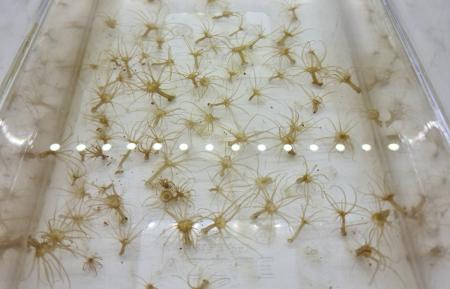Feature image: New discovery of bacterial relationship (photo taken by Justin Maire)
In a world-first, scientists have peeled back yet another layer of complexity to the inner workings of corals with the discovery of a new bacterial relationship.
The discovery could be significant in understanding a coral’s heat tolerance, with evidence of these bacteria inside the coral’s symbiotic microalgae – microscopic plants living inside the coral itself – which play a critical role in a coral’s bleaching threshold.
The new study, led by University of Melbourne and Australian Institute of Marine Science (AIMS), for the first time provides evidence for the existence of the bacteria, opening a door for new research to follow.
AIMS geneticist and co-author of the research, Australian Research Council Laureate Fellow Professor Madeleine van Oppen, said different species of microalgae harbour similar types of bacteria, suggesting the bacteria play an important role in the health and functioning of the algae.
“The next challenge is to decipher what exactly this role is. The microalgae have a large influence on the coral’s heat tolerance, and we are wondering whether the bacteria within them play a part too,” she said.
“When the water gets too hot for too long, the microscopic algae inside the coral are lost, causing the coral to turn white. This is known as coral bleaching, which can cause extensive coral death.
“Understanding the role of these newly discovered bacteria – something so tiny, so microscopic – could potentially make a huge difference to something as enormous as the Great Barrier Reef.”
University of Melbourne lead researcher Dr Justin Maire said the discovery will give a new lens to scientists who are researching coral bleaching and experimenting with assisted evolution.
“As climate change and marine heatwaves worsen, corals are at an increasing risk of more frequent and more severe bleaching events,” he said.
“Looking forward, if we manage to culture the bacteria, scientists could attempt to enhance the corals’ heat tolerance via laboratory evolution of the bacteria.
“These bacteria could then be reintroduced into the microalgae within corals, and the corals’ ability resist bleaching tested.
“This work will hopefully help coral reefs persist throughout this century until global warming is curbed and corals can recover naturally.”
This paper “Intracellular bacteria are common and taxonomically diverse in cultured and in hospite algal endosymbionts of coral reefs” has been recently published in The ISME Journal.


